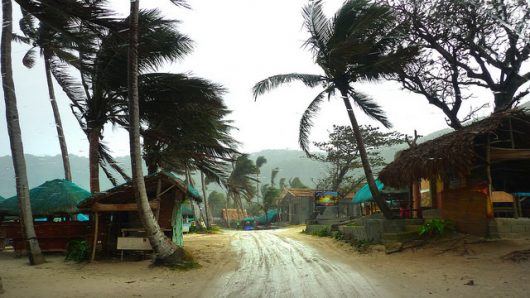Four Important Facts to Know About Infrastructure in the Philippines

Amidst the 7,107 western Pacific islands known as the Philippines, poverty is uniquely endemic. A country of scattered landmass, the Philippines is ranked the third most disaster-prone country in the world, as its close proximity to the equator encourages destructive weather such as earthquakes and storms. Natural disasters disproportionately and recurrently hit the poorest regions of the country, coursing them into higher levels of poverty.
This, along with uncontrolled population growth, exacerbates the reality of poverty within this collection of islands. Fortunately, there are significant plans in the works that focus on kicking such insufficiency to the curb, solutions that include the advancement of infrastructure in the Philippines.
Historically, insufficient infrastructure development has stunted both economic growth and poverty reduction, but there is an active movement toward improvement. Within the past couple of years, proposals have been met with action to pave the way for a change. The following are four important facts regarding infrastructure in the Philippines.
Four Facts About Infrastructure in the Philippines
- $7.6 billion has recently been approved to establish new infrastructure in the Philippines. President Rodrigo Duterte has plans for robust projects such as bridges, roads and the Metro Manila Subway. Under the national “Build, Build, Build” initiative, the country is looking to spend $180 billion to renovate and build airports, railways, roads and ports over a six-year period.
- Additional financing for the Rural Development Project for the Philippines was approved January 11, 2018. Costing over $2 million, this project aims to promote job creation, especially within rural development. It seeks to boost rural incomes and enrich both farm and fishery productivity in specified regions, as well as to establish essential pieces of infrastructure, like a network of roads, that allow farmers to sell products at market and connect to the urban areas.
- The Mindanao Trust Fund-Reconstruction and Development Project Phase II (MTF-RDP2) was approved April 4, 2018. Costing over $3 million, this project focuses on post-conflict reconstruction, improving labor market policy and programs, promoting social inclusion for ethnic minorities and appeasing forced displacement. The objective of the MTF Facility is to advance development in conflict-affected areas in Mindanao by assisting in social and economic recovery within these communities.The MTF-RDP2’s objective focuses on improved access for conflict-affected communities to basic socioeconomic structure and alternative learning systems. According to Xubei Luo, Senior Economist at the World Bank’s Poverty and Equity Global Practice, “Making a difference in Mindanao makes a big difference to the Philippines. Increasing public investment in Mindanao to boost development there would expand opportunities for conflict-affected communities, broaden access to services and create more and better jobs.”
- From 2006 to 2015, poverty in the Philippines took a dive. A recent report by the World Bank states that economic growth is responsible for poverty levels dropping by five percent. From 26.6 percent in 2006 to 21.6 percent in 2015, such a decrease in numbers is also a result of the expansion of job opportunities outside the agriculture sector.The Filipino government has a goal to reduce poverty from 13 to 15 percent by 2022. According to the World Bank, plans include the Philippine Development Plan 2017–2022 and AmBisyon 2040, a long-term vision to reduce poverty and recover the lives and wellbeing of the most marginalized regions and communities of the nation.The World Bank’s Poverty Assessment report recommends the following policy directions to achieve the proposed targets: “Create more and better jobs; improve productivity in all sectors, especially agriculture; equip Filipinos with skills needed for the 21st century economy; invest in health and nutrition; focus poverty reduction efforts on Mindanao; and manage disaster risks and protect the vulnerable.”
The sizeable collection of Filipino islands has an undying potential to continue reducing poverty through its infrastructure advancement efforts. Although an extremely complex process, both the booming Filipino economy and government project initiatives are projected to gradually alleviate cyclical Filipino poverty. The future of infrastructure in the Philippines is looking bright.
– Mary Grace Miller
Photo: Flickr
